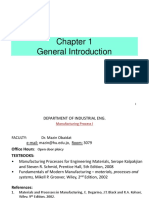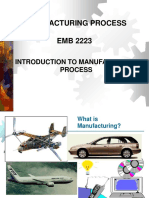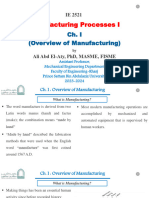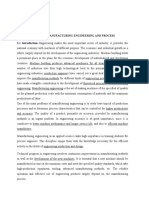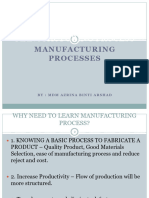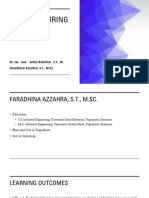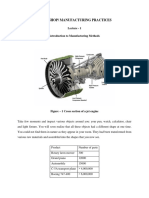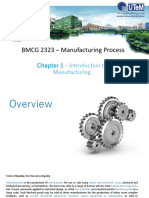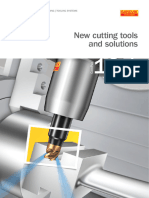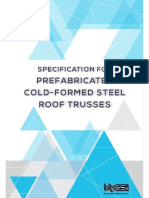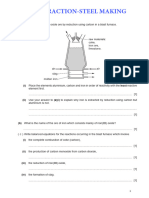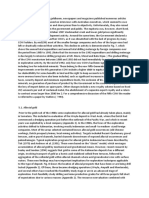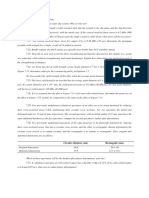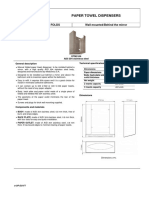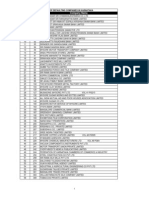0% found this document useful (0 votes)
39 views26 pagesLecture 1-2 - Introduction To Manufacturing Process
The document outlines the course 'Manufacturing Process' at IUBAT, detailing its goals, historical context, and various manufacturing processes. It defines manufacturing both technologically and economically, and categorizes manufacturing industries into primary, secondary, and tertiary sectors. Additionally, it discusses modern manufacturing steps, requirements for a good manufacturing system, and recent developments in the field.
Uploaded by
Md naimur RahmanCopyright
© © All Rights Reserved
We take content rights seriously. If you suspect this is your content, claim it here.
Available Formats
Download as PDF, TXT or read online on Scribd
0% found this document useful (0 votes)
39 views26 pagesLecture 1-2 - Introduction To Manufacturing Process
The document outlines the course 'Manufacturing Process' at IUBAT, detailing its goals, historical context, and various manufacturing processes. It defines manufacturing both technologically and economically, and categorizes manufacturing industries into primary, secondary, and tertiary sectors. Additionally, it discusses modern manufacturing steps, requirements for a good manufacturing system, and recent developments in the field.
Uploaded by
Md naimur RahmanCopyright
© © All Rights Reserved
We take content rights seriously. If you suspect this is your content, claim it here.
Available Formats
Download as PDF, TXT or read online on Scribd
/ 26
















